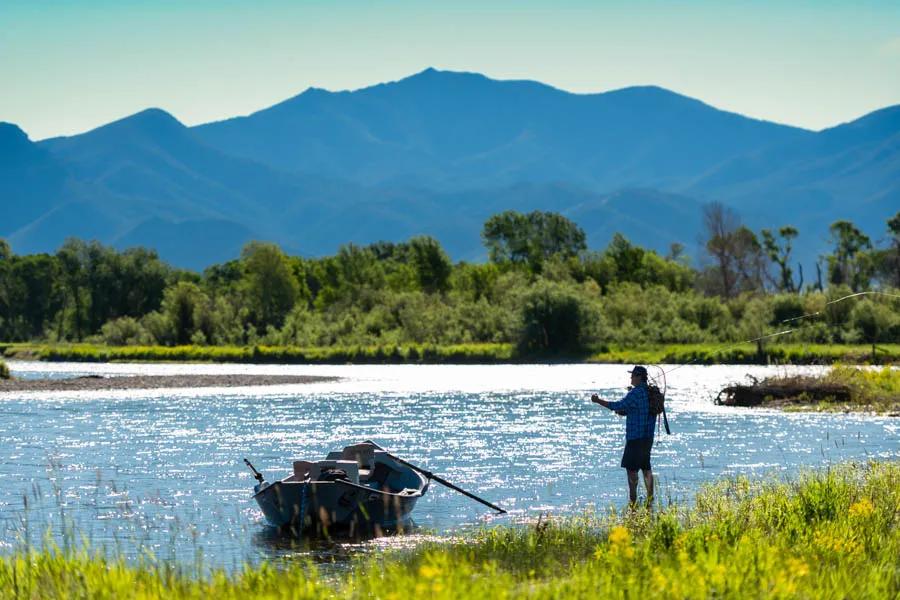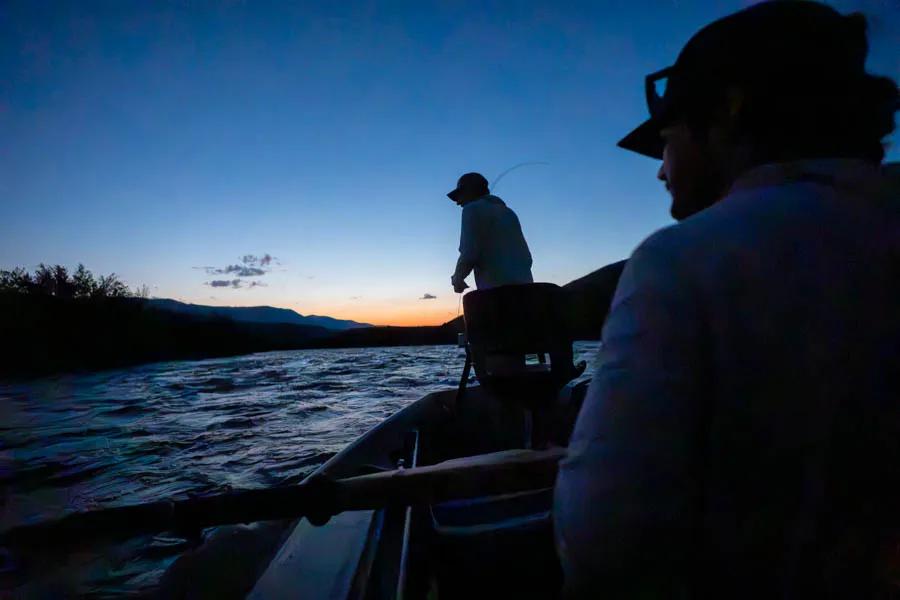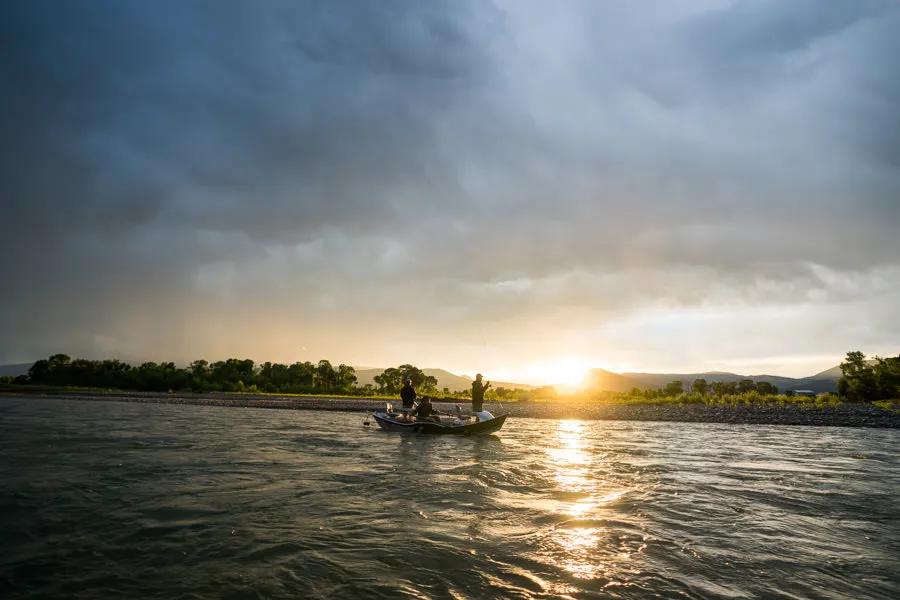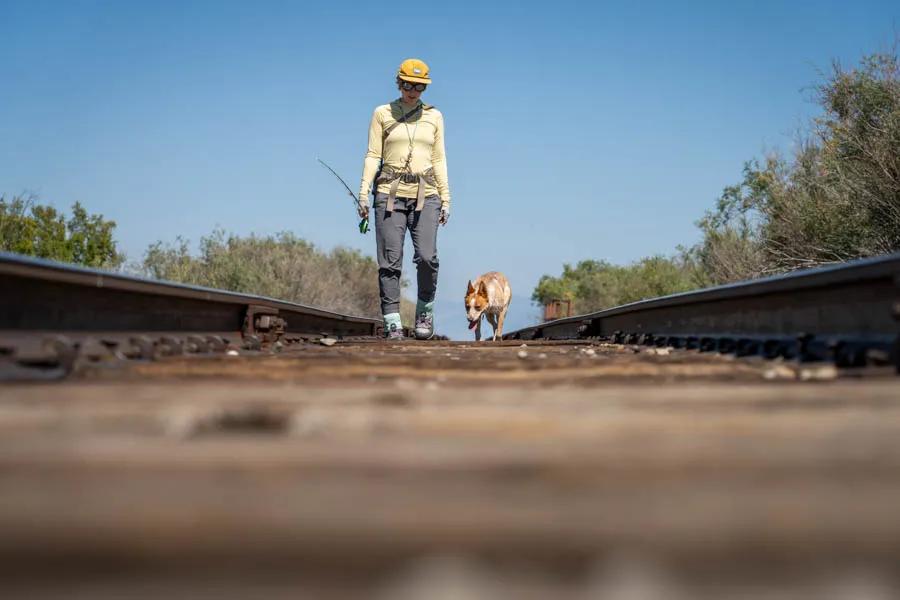
Late summer in Montana—those weeks after the hatches of salmonflies and PMDs but before the frosty mornings of fall—have a unique set of circumstances for fly fishing in Montana. In most years, by late July and early August our local trout waters have experienced prolonged periods of bright sunshine and consistently warm weather. Talk of terrestrials dominate social media and fly shop report boards, but often overlooked are the necessary adjustments needed to have success during these “dog days of summer.”
Because the list of hatches is small with tricos and caddis mostly alone on that list, trout focus on eating subsurface nymphs or terrestrials like grasshoppers, ants, and beetles. On some rivers spruce moths from nearby pine trees also find their way onto the water. We’ve talked about upping your skills and knowledge when fishing terrestrials, but consider making several basic adjustments that are essential to catching more fish in the bottom half of summer.
Here are some top tips to help you find more success when fishing in late July, August, and September.

The Early Bird Gets the Trout
This one feels simple, and it actually really is. Just wake up and start your fishing as early as you can—even if that means you are on the water at dawn. This is mostly a function of the coolest water temperatures are in the early morning hours. With the often low streamflow conditions of late summer paired with the often high air temperatures, water temperatures in nearly all of Montana’s best fly fishing waters can warm quickly in the afternoons during late July, August, and September. Trout feed more in cooler water so fish when the trout are the most hungry--typically dawn 'til mid-afternoon.
Late Can Be Great—But for Different Reasons
Some Montana fly fishing rivers can experience some great fishing just before dark. Be sure to check the water temperature and local regulations in case a stream is in Hoot Owl Restrictions. If the water temps are below 65 degrees F in the evening then you could have a window of action. Trout swimming in our local waters know something larger often lurks that is looking for a meal, whether it’s a bigger trout or a river otter. Of course, trout want to continue living so in late summer trout are most active in the low light conditions of early morning and late evening. In high summer it can be a good idea to fish early in the day before the sun gets high, usually around noon, then again in the late afternoon or early evening.

The Sun Affects Trout AND You
Just like prolonged sunshine shinning into a trout river causes unique circumstances, it also affects your ability to fish. Fly fishing in Montana in late summer means sunshine and warm temperatures. It is great weather to enjoy being outside and on a cool river, but you must also have proper clothing and headwear. Start your day by applying sunscreen with an SPF of at least 30 and it is best to do it immediately after bathing. A wide-brimmed hat is an important first layer of defense. Underneath the hat wear a facial sun-mask to protect your face and neck. The tops of your hands see substantial sun exposure as well, so invest in sun gloves—a lightweight fingerless covering—to protect this exposed area.
If Trout are Your Prey, Protect Your Eyes
Many predators use a keen sense of sight to locate their prey. When you are fly fishing you are acting like a predator. Your eyes are perhaps your biggest tool in finding trout—they help to read water including things like depth changes or current seams, they help to tie on the right fly, they help to see if there is a hatch, but most importantly they may help to see trout under the surface of the water. Polarized glasses are a must. Choose glasses that provide 100-percent UV protection from both UVA and UVB rays. Photochromatic lenses add another safeguard, as does choosing the largest lens possible.

And if You Do Catch a Fish, Release it Properly
As the sun gets high in the middle of the day, the water temperatures rise as well. For fish you plan to release, always keep them in the water while removing the hook. When taking a picture have the camera ready before the fish is raised into view. Shoot a few pictures and immediately return the fish to the water. If you still need more pictures let the fish recover, then do round two. While releasing the fish, face it into the current so that water can flow through the gills, and release it into calm, yet flowing water. Gently cradle the fish and release it once it can swim off under its own power. By releasing fish properly you can ensure these fish can continue to keep the best fly fishing in Montana available to you.
Lastly, Fish Need Water to Survive. So Do You.
With the prolonged heat and sunshine of late summer, it is crucial you stay hydrated. You don’t want to be that angler who partied too hard the night before or didn’t replenish what caffeine and alcohol drained and is now feeling under the weather because of dehydration. Sure, you can probably hear your nagging grandma in the background, "sunshine drains your energy," but you can combat that with drinking plenty of fluids. Drinking water is best and drink it before you feel thirsty, because if you feel thirsty, your body is trying to catch up. Stay hydrated so you continue to enjoy all that Montana fly fishing has to offer.

Fly fishing in Montana in late summer—late July through mid-September—is not as well defined as spring, fall, or early summer’s post-runoff action. This lack of any clear parameter to the season is a huge part of its appeal. Most days the fishing with terrestrials including grasshoppers, ants, and beetles can be quite good. Other days fish have to be pried from the depths with subsurface nymphs. There’s even a “secret season” during late summer that many Montana fly fishing guides remained tight-lipped about.
If you are planning to fly fish in Montana during late July, August, or early September be sure to utilize the tips featured here. Some of the year’s best fishing can happen in late summer. The fish adjust their habits based on water temperature, available food, and protection from predators. Anglers must also make some adjustments as well.
